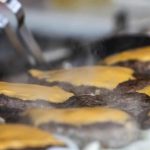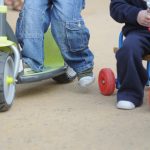Outling his recent article, published in Nature: Human Behaviour, Peter Lynn describes how to best avoid the pitfalls of survey research, and create surveys that gather high quality data
Blog
ISER researchers discuss their work in these blog posts.

Access to Justice: Legal aid and service for immigrants in the family justice system
- Renee Luthra
Renee Luthra and Edit Frenyo write about the shortages of legal advice for immigrants.

The impact of takeaways near schools and homes on childhood obesity
Childhood obesity is an escalating public health challenge. Dr. Hester Burn, Dr. Angus Holford, and Prof. Birgitta Rabe are working to better understand the extent of it and the factors driving it.

How does early socio-emotional development in childhood relate to later offending?
- Paul Garcia Hinojosa
Dr Paul Garcia Hinojosa introduces his project using linked administrative data to explore how socio-emotional characteristics observed in early childhood relate to offending behaviour during adolescence.

The minimum wage and career progress
Dr Silvia Avram asks if the minimum wage goes up, do people’s chances of moving to a better-paid job go down?

Bias in Schools and role congruity theory
Dr Joshua Fullard explains how he finds male applicants face systematic disadvantages when applying for positions in the school workforce – particularly for less senior roles

Survey modes and mode effects: an explainer
Research Fellow Jamie Moore writes a blog about survey modes and mode effects

Survey weights: an explainer
Research Fellow Jamie Moore writes a blog about survey weights

Interdisciplinary Perspectives on the Festival of Genomics & Biodata
- Jasmine Ratcliff
- Anna Dearman
Anna Dearman and Jasmine Ratcliff share their insights from the Festival of Genomics & Biodata conference

Understanding the biology of poor mental health in the general population
Many of us experience poor mental health at some point during our lives, whether it’s mild or severe, brief or prolonged. We know something’s going on in the mind, but are there any biological differences in the body?
Anna Dearman describes how to explore this question using measures of molecules in the blood.



